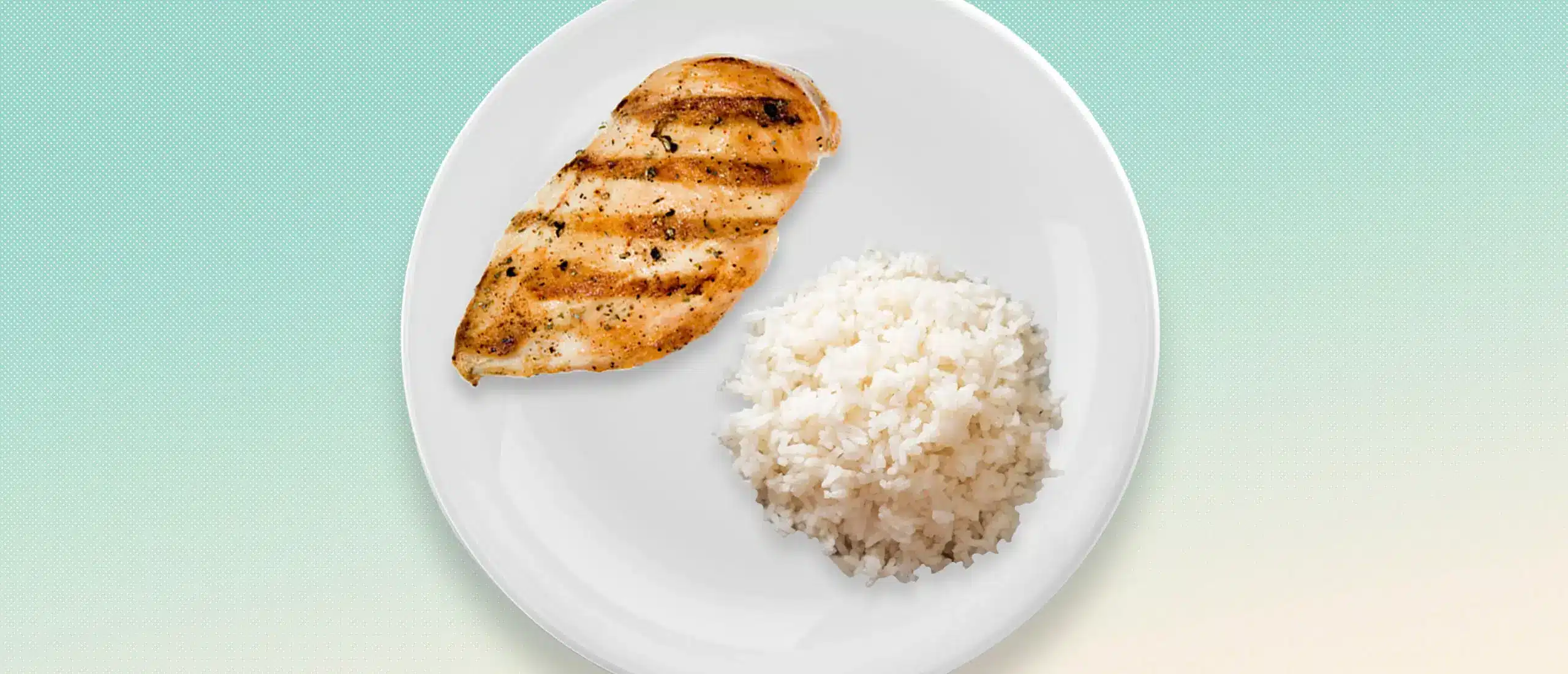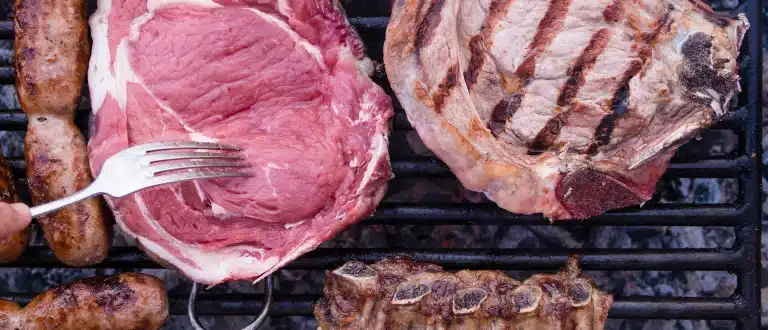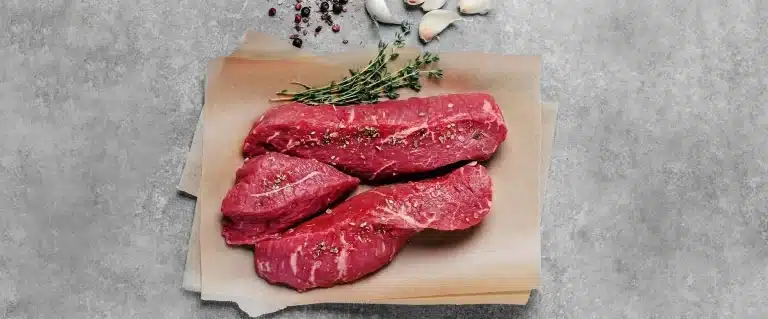Is Chicken and Rice Actually Healthy? A Registered Dietitian Explains
It was never my dream to down massive amounts of chicken and rice, but my collegiate Track and Field coach said I needed to boost my protein and carb intake to find the gains we were greedily chasing.
His solution: Eat at least six chicken breasts each paired with a half cup of rice, daily.
If that sounds excessive, it was. The sheer amount of chicken more than delivered the protein I needed to build and maintain muscle. Plus, while white rice is a solid source of carbs, by eating only white rice I was missing out on the nutrients that come from a variety of carb sources like sweet potatoes, brown rice, and other whole grains.
His advice, like many gym bros and bodybuilders, was too extreme. But well intended.
Chicken and rice are both easy to meal prep, nutritious, and better for you than fast food. The lean protein and fast-digesting carbs provide recovery with every bite. Slather it with sauce and seasonings and it can shift from orange chicken to chicken piccata.
But how healthy is chicken and rice? And how much do you really need? (Hint: it’s less than six chicken breasts and mounds of rice per day). We enlist the help of registered dietitian Imashi Fernando, M.S., R.D. to find out.
Is Chicken and Rice Healthy?
Yes, Fernando confirms, chicken and rice is a generally healthy meal. “Chicken is high in protein, and rice is a rich source of carbohydrates,” she says, “both of which are important macronutrients that fuel your body to operate at its best.”
But how healthy it is depends on how you cook it. “Baked, roasted, or stir-fried chicken make for healthier options than fried chicken or lunch meat which is pumped with added preservatives to keep it fresh,” says Fernando.
Plus, she points out that your chicken and rice should be free of sugar-laden sauces that line the shelves of the grocery store and add empty calories to your plate.
Variety in your diet is also essential. Fernando notes that eating a balanced diet that incorporates a variety of nutritious foods like whole grains, lean proteins, healthy fats, fruits, and vegetables is important to make sure that you are getting the right amounts of all your essential macro and micronutrients.
“Aim for at least three to four different colors on your plate at each meal—the closer your plate looks like a rainbow, the better,” she adds.

Want exclusive content? Our digests do that.
The best science-backed, expert-driven health and lifestyle content delivered to your inbox, weekly.
How Healthy Is Chicken?
Very. According to Fernando, chicken is rich in niacin and selenium which can help boost your immune system. Plus, it’s packed with zinc, vitamin B6, and vitamin B12 which plays an essential role in energy production.
It’s also praised as a lean source of protein. “Compared to other options like pork or beef, chicken is relatively low in calories and high in protein,” Fernando says. “This makes it a good choice if your goal is to lose weight or gain muscle but not fat.”
Is Chicken More Nutritious Than Steak or Salmon?
Fernando points out that just because chicken is leaner than salmon and red meat, it isn’t the only viable protein choice. Sure, it may be better if calories or fat is all you care about, but red meat is loaded with more zinc and iron than chicken. And salmon is a rich source of heart-healthy omega-3 fatty acids.
All three are excellent sources of protein, but each has a unique nutrient profile. “That’s why eating a variety of proteins each week will make it easier to reach the recommended daily value of each nutrient to optimize the vital functions of your body,” says Fernando.
Here’s how a 3.5-ounce serving of chicken, steak, and salmon compare in nutrition.
|
Nutrients |
|||
|
Calories |
158 |
149 |
182 |
|
Protein |
32 grams |
23 grams |
25 grams |
|
Carbs |
0 grams |
0 grams |
0 grams |
|
Fat |
3 grams |
6 grams |
8 grams |
|
Fiber |
0 grams |
0 grams |
0 grams |
|
Iron |
3% of DV |
10% |
6% |
|
Selenium |
58% of DV |
38% |
85% |
|
Niacin |
59% of DV |
43% |
63% |
|
Vitamin B6 |
54% of DV |
34% |
56% |
|
Vitamin B12 |
8% of DV |
72% |
127% |
|
Zinc |
9% of DV |
34% |
7% |
Which Is Healthier, White or Brown Rice?
Rice is a valuable source of carbohydrates that fuels your body with energy. It’s often assumed that white rice is unhealthy because it’s less nutrient dense than brown rice, but it can be a better choice in some circumstances.
White rice has a high glycemic index (64, as opposed to brown rice at 55) which means it spikes your blood sugar more quickly than brown rice. Diets higher in white rice have been linked to a higher risk of type 2 diabetes (1) and metabolic syndrome (2). Whereas, brown rice intake is associated with a reduced risk of type 2 diabetes (1).
White rice is also missing the hull that brown rice retains, and thus lacks many of the vitamins and minerals found in brown rice. However, it’s often fortified with added nutrients like iron and B vitamins to up its nutritional value.
Brown rice, on the other hand, is a rich source of fiber, which takes longer to digest than white rice, and leaves you feeling full for longer. It contains a wider variety of vitamins and minerals, essential amino acids, and disease-fighting antioxidants than white rice, too.
Here’s how 100 grams (about ½ cup) of white and brown rice stack up in nutrition.
|
Nutrients |
||
|
Calories |
133 |
109 |
|
Protein |
2.4 grams |
2.3 grams |
|
Carbs |
29 grams |
23 grams |
|
Fat |
0.2 grams |
0.8 grams |
|
Fiber |
0.3 grams |
1.8 grams |
|
Folate |
0.5% of DV |
0.1% |
|
Manganese |
32% of DV |
47% |
|
Thiamine |
2% of DV |
8% |
|
Niacin |
3% of DV |
8% |
|
Iron |
1% of DV |
3% |
|
Vitamin B6 |
7% of DV |
9% |
|
Phosphorus |
3% of DV |
6% |
|
Copper |
8% of DV |
9% |
|
Magnesium |
2% of DV |
10% |
|
Zinc |
4% of DV |
6% |
A half cup of brown rice has fewer calories than white rice and six times as much fiber. “The higher fiber promotes satiety, which may help with portion control and ultimately weight loss,” says Fernando. She also points out it plays a critical role in promoting digestive health, heart health, and blood sugar control.
However there are certain cases where white rice reigns supreme. For those with digestive issues, white rice goes down much easier. White rice is also ideal for elite athletes and bodybuilders who need to replenish muscle glycogen (stored fuel) quickly after a workout.
“The decision to eat white rice vs brown will depend on your individual health and fitness goals, as well as existing health conditions,” explains Fernando. “Talk to a dietitian to better understand what type of rice may work best for you.”
Benefits of Eating Chicken and Rice
If you’re wondering whether to eat chicken and rice, here are some benefits you can reap from your meal.
- Packed with protein and carbs
- Curbs appetite (3)
- Increases muscle mass (4)
- Improves bone health (5)
- Boosts immunity
How Much Chicken and Rice Should You Eat?
How much chicken and rice you eat should be dictated by your goals. Portion sizes are everything when it comes to weight loss and muscle gain. Here’s how Fernando breaks it down.
For weight loss
If your goal is to lose weight, aim for a high protein, high fiber diet. “Choose brown rice for the higher fiber and limit it to about a quarter of your plate,” says Fernando. “Eat at least one 3.5-ounce serving of lean protein per meal, if not more.”
For muscle gain
If you want to build muscle, you may need to eat larger portions of chicken and rice to meet the energy needs of muscle growth. According to Fernando, exactly how much more will vary on individual calorie and protein needs which will differ based on age, height, weight, biological sex, activity level, and specific body composition goals.
“Even though you’re eating more calories, it’s still important to get those calories from nutrient-dense foods,” she advises. “So continue to limit deep-fried foods and added sugars, even if it’s in the form of chicken and rice.”
Keep in mind, no amount of chicken and rice will help you build muscle if you aren’t lifting weights. Aim to get at least two lifting sessions that hit all major muscle groups per week to build muscle (6).
Chicken and Rice FAQs
You’ve got questions about chicken and rice. We have answers.
Can you survive only on chicken and rice?
In short, yes. The better question is: should you? “So long as you aren’t on a medically-necessary restrictive diet like a low FODMAP diet, opt for a diet with more variety,” says Fernando.
Can you eat chicken and rice every day?
Yes, you can, but do you really want to? Fernando also warns these two elements alone don’t make a balanced meal because you’re missing out on the recommended half-plate serving of veggies. “Instead, get some stir-fried or roasted veggies in with your chicken and rice,” she says, “and mix and match your plates with other protein and grains for variety.”
Why do bodybuilders eat chicken and rice?
The main reason bodybuilders eat rice and chicken is because it’s cheap, clean, and incredibly good for building muscle. After a workout, your goal should be to fuel your muscles with protein and carbs. Chicken is a great source of protein, while rice is carb-heavy and digests quickly, making it a perfect option for rapidly restoring muscle glycogen stores depleted during your workout.
Is chicken and rice good for weight loss?
Yep, chicken and rice is a solid meal choice for weight loss. Chicken is a great source of lean protein, meaning it’ll supply more protein for less calories than other cuts of meat like lean steak or salmon. Plus, the combo of carbs and protein will keep you satisfied for hours.
However, Fernando recommends swapping white rice for brown. It has more fiber and will keep you feeling full for longer. Then add a serving of green vegetables like roasted broccoli, sautéed spinach or kale, or Brussels sprouts. They’ll increase the volume and fiber of your meal, helping you feel full on less—while providing precious vitamins and minerals that become even more important (and hard to come by) when cutting calories.
References
1. Sun, Q. et al (2010). White rice, brown rice, and risk of type 2 diabetes in US men and women. https://pubmed.ncbi.nlm.nih.gov/20548009/
2. Krittanawong, C. et al (2017). Is white rice consumption a risk for metabolic and cardiovascular outcomes? A systematic review and meta-analysis. https://pubmed.ncbi.nlm.nih.gov/29467837/
3. Moon, J. et al (2020). Clinical Evidence and Mechanisms of High-Protein Diet-Induced Weight Loss. https://www.ncbi.nlm.nih.gov/pmc/articles/PMC7539343/
4. Carbone, J. et al (2019). Dietary Protein and Muscle Mass: Translating Science to Application and Health Benefit. https://www.ncbi.nlm.nih.gov/pmc/articles/PMC6566799/
5. Bonjour, J (2013). Dietary Protein: An Essential Nutrient for Bone Health. https://www.tandfonline.com/doi/abs/10.1080/07315724.2005.10719501
6. Schoenfeld, B. et al (2016). Effects of Training Frequency on Measures of Muscle Hypertrophy: A Systematic Review and Meta-Analysis. https://pubmed.ncbi.nlm.nih.gov/27102172/














